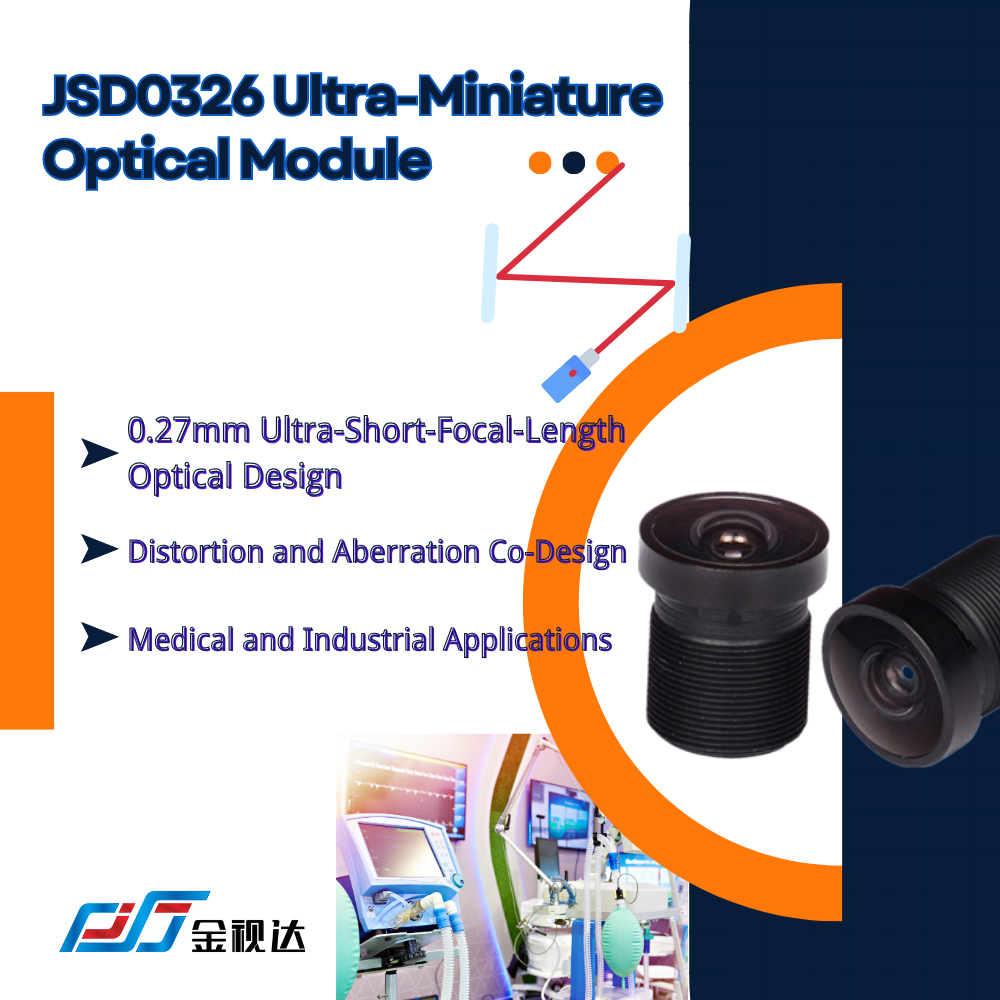JSD0326 Ultra-Miniature Optical Module
When the total track length (TTL) is compressed to 3.75mm, it is no longer merely a "miniaturized lens" but a spatial folding system that redefines macro-imaging rules. In the folds of vascular endotheliums, it acts as an "optical probe" capturing lesions; in the compound eyes of hummingbird robots, it serves as a "wide-angle compound eye" navigating dense forests.

I. 0.27mm Ultra-Short-Focal-Length Optical Design
1.High-Refractive-Index Plastic Aspherical Lenses (2P)
Utilizing specialty molded aspherical lenses (refractive index Nd≥1.75), it achieves a 134° diagonal field of view (DfOV) within an ultra-compact TTL of 3.75mm. The optical path compression ratio reaches 1:13.9 (vs. the conventional M12 lens average of 1:8.5). The chief ray angle (CRA) is optimized to 18°, precisely matching the microlens array of 1/15-inch micro-sensors, with edge relative illumination (RI)>52%.
2.Freeform Optical Power Distribution
The front group employs negative-power lenses (curvature radius R=−0.85mm) to expand the viewing angle, while the rear group uses positive-power lenses to compensate for field curvature. Under an F2.6 large aperture, the full-field MTF exceeds 0.3@125 lp/mm.
II. Distortion and Aberration Co-Design
1.Active Barrel Distortion Suppression
A global distortion rate <-6.23% (TV Distortion standard) is achieved via an asymmetric polynomial surface equation:
Z=(c·r²)/(1+√[1-(1+k)c²r²])+α₁r⁴+α₂r⁶
2.Dual Chromatic Dispersion Compensation
Using materials with Abbe number Vd <32 and a virtual achromat layer algorithm, lateral chromatic aberration is reduced to <1.5 μm across 400–650 nm .
3.Thermal Stability Design
Plastic lenses (PEI + 30% GF) with a linear coefficient of thermal expansion (CLTE) as low as 2.8×10⁻⁵/K limit focal shift to λ/4 (λ=550nm).
4.Tolerance Chain Optimization:
Assembly tolerances include ±15 μm eccentricity and ±0.8° tilt, supporting SMT mass production (±20 μm precision).
III. Medical and Industrial Applications
1.Endoscopic Imaging (100° Vertical FoV):
Covers a 5mm working distance (WD) with an 8×6 mm² field, replacing traditional fiber-optic image bundles. At 0.1 Lux intracavity illumination, it outputs images with SNR >36 dB.
2.Micro-Robot Vision
Plastic lenses reduce weight for bio-inspired flapping-wing robots (wingspan <10 cm). A 120° horizontal FoV (HfOV) enables obstacle detection with <8 ms response time.
3.Consumer Electronics Microscopy
As a smartphone macro lens: 0.5X magnification at 5mm WD, resolving 2 μm features (e.g., RGB pixel defects on screens)
